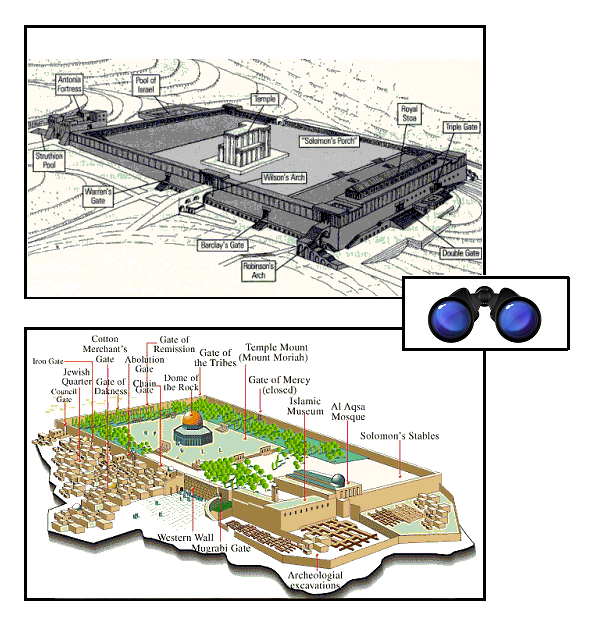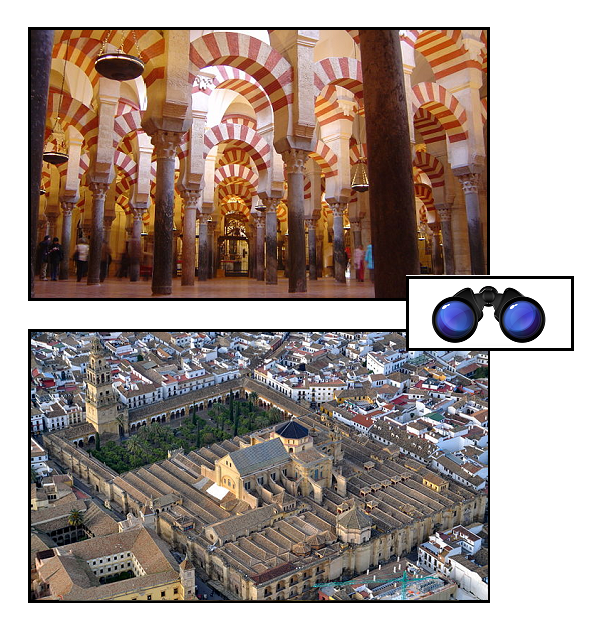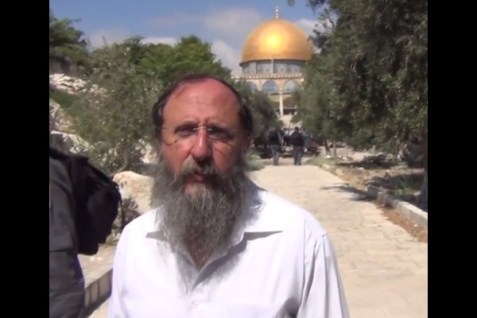[ by Charles Cameron — of the Temple Mount and Noble Sanctuary, by way of Bamiyan and Timbuktu, the Cordoba Mezquita and Cathedral ]
.
**
Today as I write this, it is Tisha b’Av — the day on which the destruction of the First and Second Temples in Jerusalem took place in 587 BCE and 70 CR respectively — observed with mourning in the Jewish calendar.
I have recently been saddened by the destruction of sufi shrines by jihadist forces in Timbuktu and of Shia Husseiniyas in Tal Afar and Mosul. I am saddened by the destruction of the two Jerusalem Temples in much the same way that I mourn the destruction of so many other sacred sites across the centuries — most personally in my case, the destruction of the Bamiyan Buddhas by the Afghan Taliban within my lifetime. And I sympathize with those saddened by the imposition of a Christian cathedral in the middle of the Mezquita of Cordoba — and would be saddened yet again should that cathedral be torn down in the name of yet another “conquering” religion.
It is the habit of conquerors to destroy or reorient the shrines and temples of the conquered in alignment wiuth their own religious beliefs or secular ideologies, and likewise of the conquered to retain their own faith, either adapting it to continue under cover of the newer religion, or maintaining its memory with the hope of its soon revival.
In the case of the Mezquita or Grand Mosque of Cordoba, the mosque itself was built on the site of a Visigoth church, and still contains its eastern wall in which the mihrab indicating the direction of Mecca is now situated. I tend to share the regret Carlos V expressed when he said of the cathedral built within the mosque:
You have built what you or others might have built anywhere, but you have destroyed something that was unique in the world.
Be that as it may, history is a palimpsest, and while I can sympathize with the grief Msulims feel at the loss of their great place of prayer in Cordoba, I can also sympathize woith those Christians for whom the cathedral is their place of worship.
**
Likewise, while I can sympathize with how observant Jews feel at the loss of the First and second Temples, commemorated with fasting on this day, I am also vividly aware that on Temple Mount — known to Islam as the Noble Sanctuary — now stand the al-Aqsa Mosque and Dome of the Rock, two structures sacred to observant Muslims.
As we consider the recent events in Gaza — warfare and ceacefires alike — and on the occasion of Tisha b’Av, it is worth remembering that as recently as a little over a year ago, Knesset member Uri Ariel suggested it was time to rebuild the Temple on Temple Mount:
Perhaps he envisioned the words of the prophet, “The glory of this latter house shall be greater than that of the former, saith the LORD of hosts; and in this place will I give peace, saith the LORD of hosts” (Haggai 2:9).
“We’ve built many little, little temples,” Ariel said, meaning synagogues, “but we need to build a real Temple on the Temple Mount.”
Indeed, today Rabbi Chaim Richman of the Temple Institute led a party of Jews up the Mount in commemoration of the two previous Temples, telling reporters:
Today, on Tisha B’Av, the day upon which the Holy Temple was destroyed, we came together with hundreds of Jews to the Temple Mount to fulfill the commandment of being in the holy place, to pray there for the welfare of the IDF soldiers who are defending all of Israel, and to show that the cycle of endless mourning can only end when the Jewish people are ready to accept responsibility for the rebuilding of the Holy Temple. That responsibility rests squarely upon our shoulders. The sages of Israel have taught that the Holy Temple can only be rebuilt once the nation has achieved a level of unity and unconditional love. Throughout the past few weeks, our nation has been witness to a level of unity that is almost unprecedented in memory. This is the type of unity and commitment that will enable our generation, with the help of God and with the will of the people of Israel, to rebuild the Holy Temple.
Thus Gaza this year is interwoven with Tisha b’Av and the rebuilding of the Temple — on a site already occupied by the al-Aqsa Mosque and Dome of the Rock — in a manner which complicates the overall situation in Jerusalem with the “end times” expectations of not two but three great world religions.
Grief upon grief.
**
For greater detail on these issues, see my posts Three from Haaretz on the Temple Mount and The most contested piece of real-estate on earth. As I noted in both posts, Gershom Gorenberg‘s book The End of Days is the definitive text exploring these differing apocalyptic expectations.





